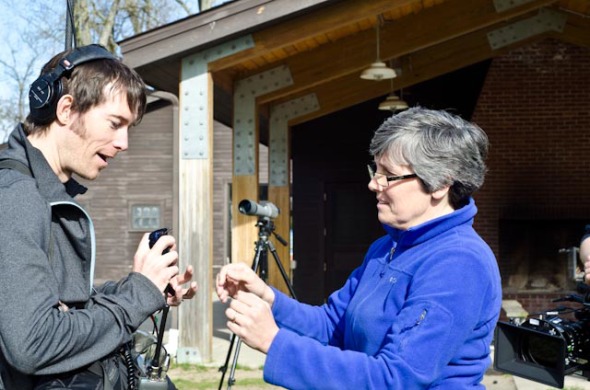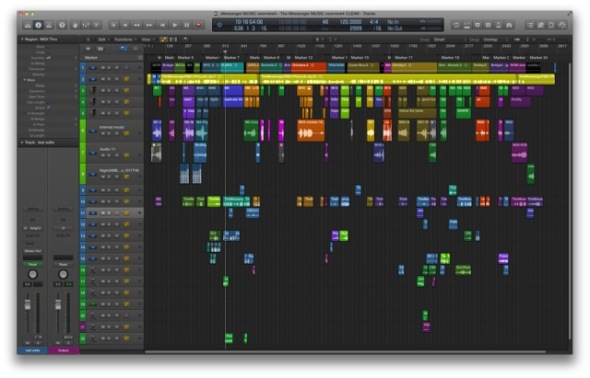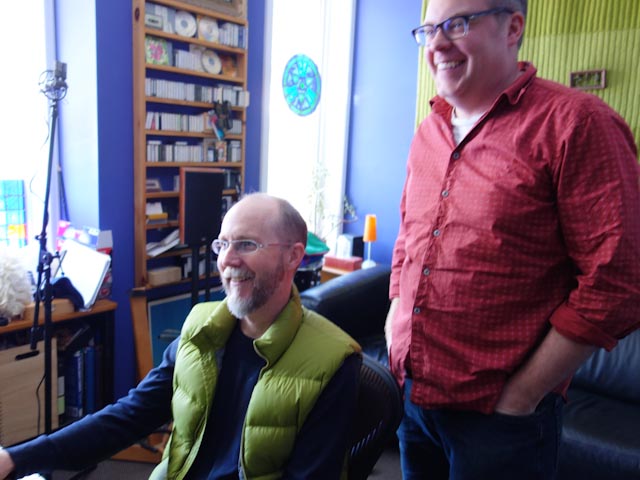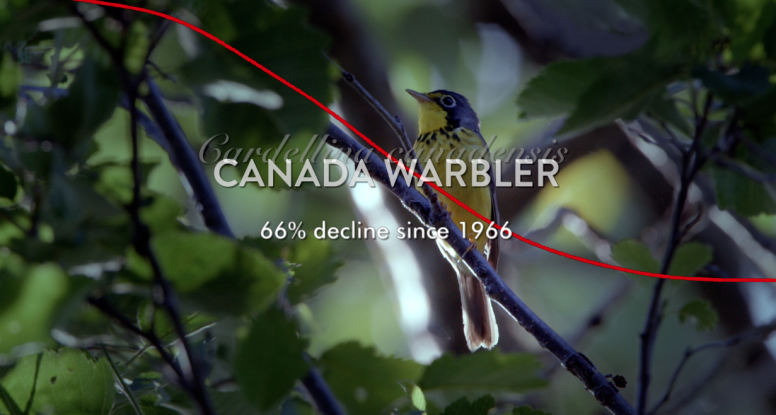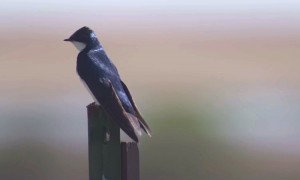To film The Messenger we travelled across three different continents, as the film takes viewers on a journey from the northern reaches of the Boreal Forest to the base of Turkey’s Mount Ararat to the urban streets of New York – and more. In Toronto, we filmed with FLAP (Fatal Light Awareness Program). Here, at dawn, during migration season, volunteers patrol the city street looking for dead or injured birds. They document the dead and rehabilitate the wild. Some days are worse than others, as fatalities can range from zero a hundred birds or more.
Our shoot day was a lucky day for the birds, due to the weather conditions and migration patterns – collisions were low. So without much to film, our team headed by Joshua See (cinematography) and the multi-talented Caitlin McManus (sound) packed up their gear and headed home.
However, a short time later, Cait stumbled across a small flock of Golden-crowned kinglets that had collided with a building. Given that the day’s filming had been a bit of a bust – Cait called Josh back to the “crime scene” to film the collision fatalities. To find a group of dead Golden-crowned kinglets is a sad story indeed. These birds have declined by about 2.5% per year since 1966 – this translates into a 67% decline since 1966! Sobering statistics indeed.
There is a ray of hope in this story.
There was a kinglet that survived, and it was sitting on the sidewalk stunned. Josh managed to get his camera out and ready in time to film this kinglets transformation from stunned to “back in the game” as it flew away. This has to be one of my favourite moments in the film. Watch it here:
We were really happy to see this little guy muster his strength and get back on this way. Golden-crowned Kinglets live in Canada’s dense stands of spruce and fir forests during summer, and when it gets cold they move south to spend winters across the U.S. Let’s hope the rest of his journey was safe.
Filming wild birds in the city has its challenges, but what about in the wilderness? This is a question I put to cinematographer Joshua See.
“Filming wildlife, tiny songbirds included, takes a special set of technical skills, nature-knowledge, and patience.”
“From the camera technical side of things you typically need large telephoto lenses and big stable tripods that support the camera’s weight and keep shots steady. You’ll also need strong legs to haul the gear to where the wildlife is!
An important ecosystem that we wanted to capture in The Messenger was Canada’s vast and notoriously thick Boreal forest. Wildlife biologist colleagues of mine often refer to it as the “Boreal Jungle”. With a massive camera slung over your shoulder, and a pack full of lenses and batteries, it definitely seems a fitting term!
The next critical piece is to find the birds you are looking for.
There are two main strategies that can be employed here: sit and wait, or listen and move.
While filming on location in Costa Rica more often than not I was able to identify busy bird locations where he could set up inconspicuously and wait. Flowering trees, ripe banana plants, or a shady trickling stream were bird hotspots.
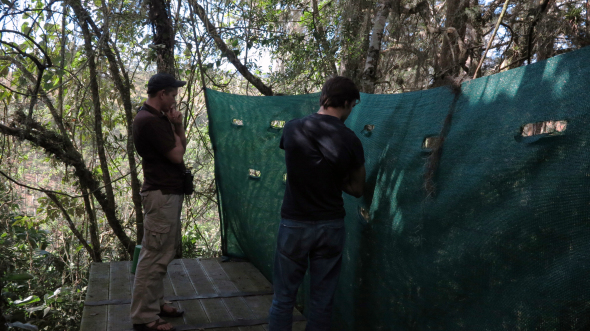
Joshua See cinematographer, with bird guide Ernesto Carman fine tune the “blind” that kept the camera hidden from the birds.
Our incredible bird guide, Ernesto Carman from Café Christina coffee farm, took director Su Rynard and me to a large and beautiful tree next to an old café in a Costa Rican river valley. There, every night hundreds of Baltimore orioles and Rose-breasted Grosbeaks seek refuge under its canopy. We watched and filmed in amazement as streams of beautiful birds converged on the old tree.
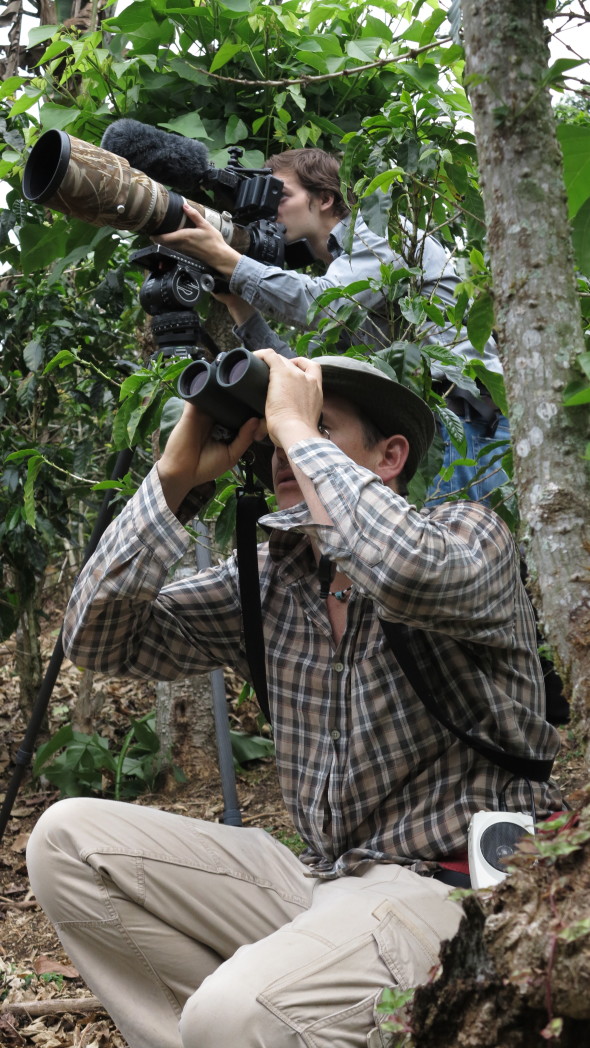
Joshua See, cinematographer, with bird guide Ernesto Carman. Filming at Café Christina coffee farm in Costa Rica
Back in the Boreal jungle, the best strategy was to listen for the songs of the songbird species we especially wanted shots of, and then to try and locate that male based on his loud song being broadcast through the forest. Having knowledge of birdcall identification proved invaluable.
It’s also important to consider the time of day: birds are most active at dawn and dusk while the air is cool. Typically mid-day is when bird activity is lowest, and the sunlight least pleasing for getting the most beautiful frames.
When all of the right factors come together we are able to get a close-up view into the often-mysterious world of songbirds.
Ultimately, the birds are the real stars and should take most of the credit for the beautiful imagery we see on screen. We are grateful for their participation in the production.

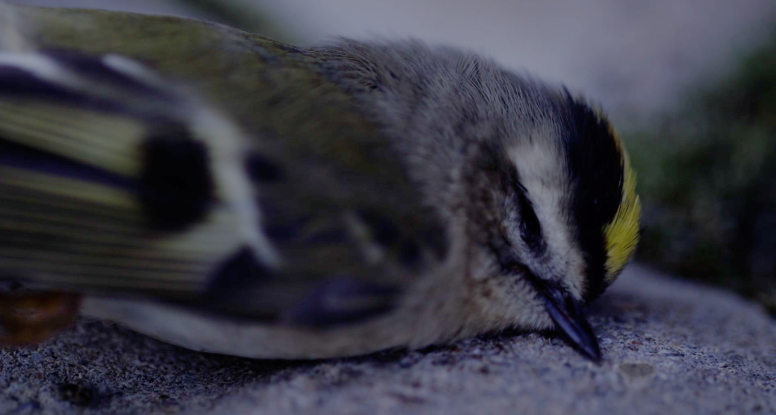
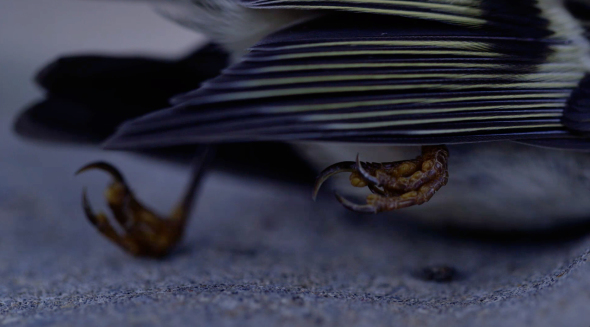
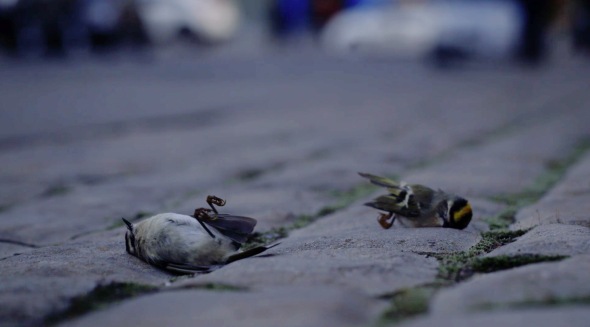
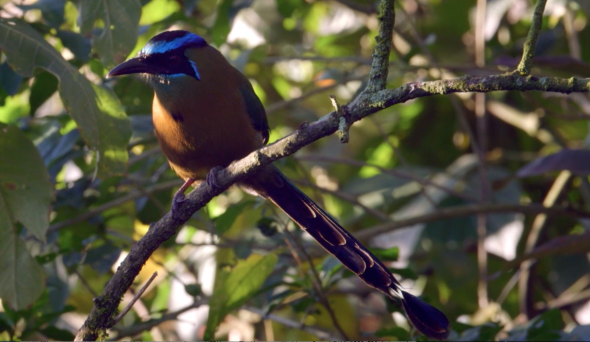

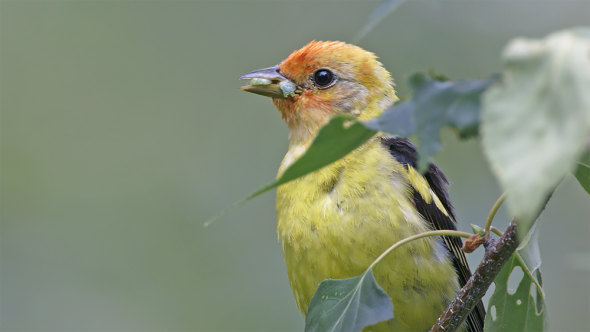
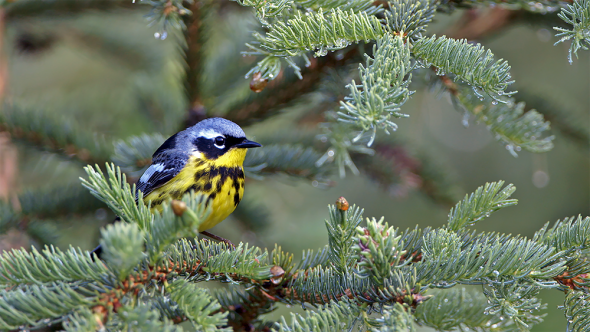
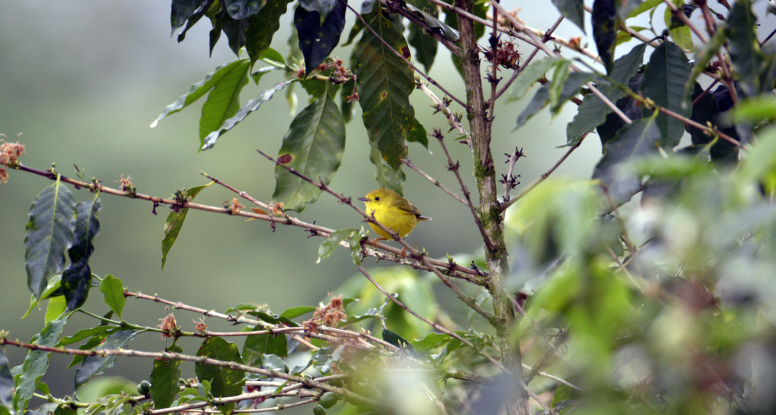
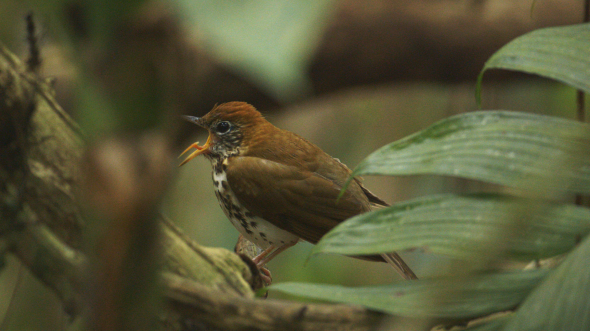
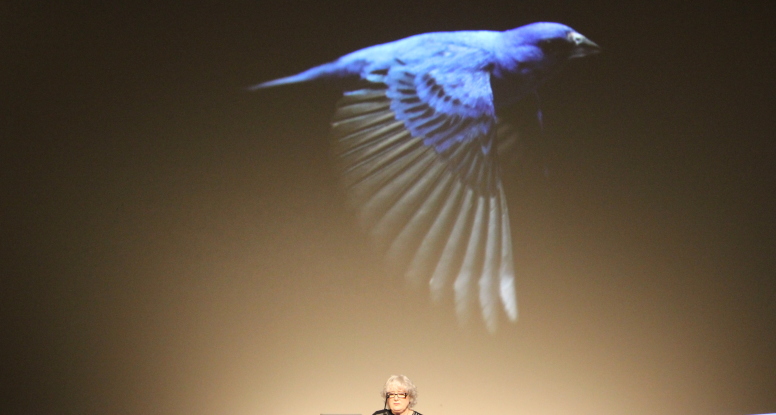
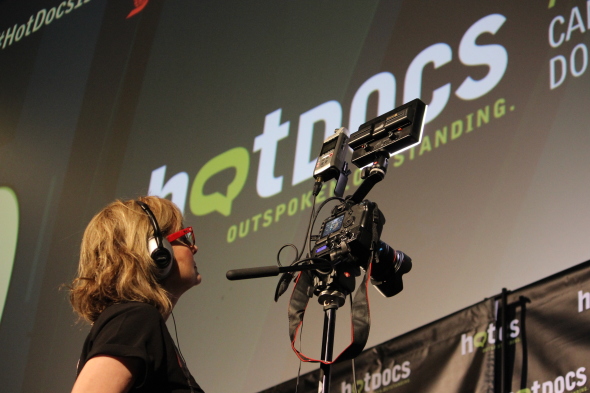
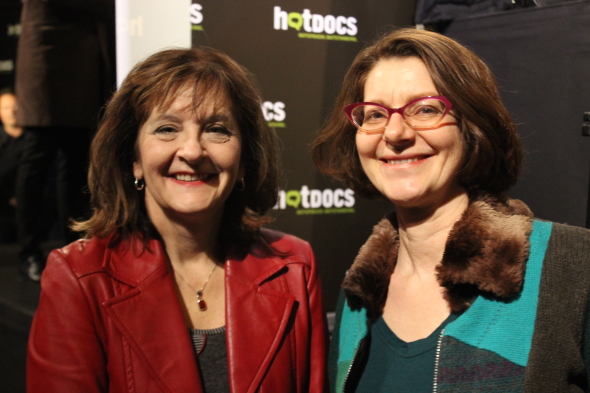
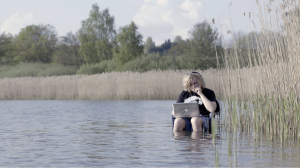
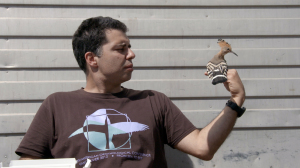
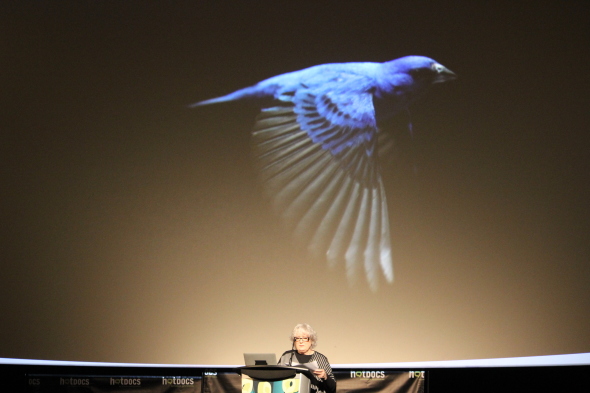
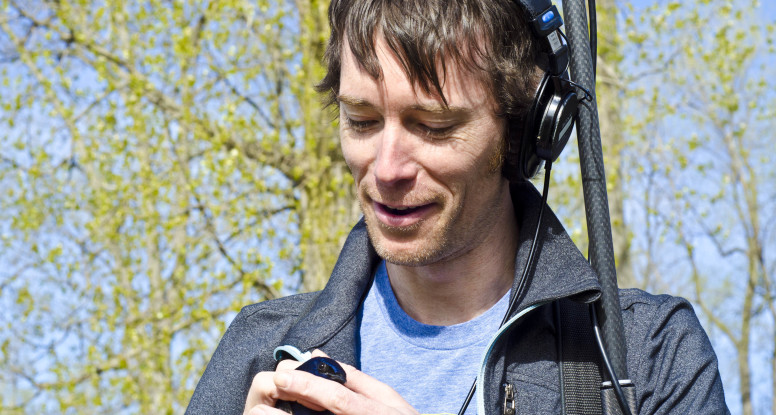
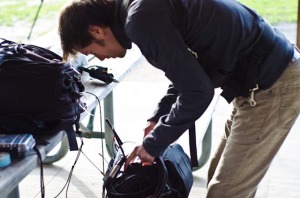 .
.